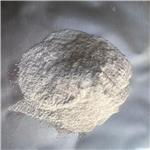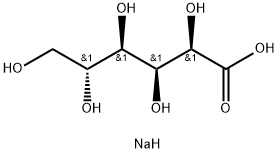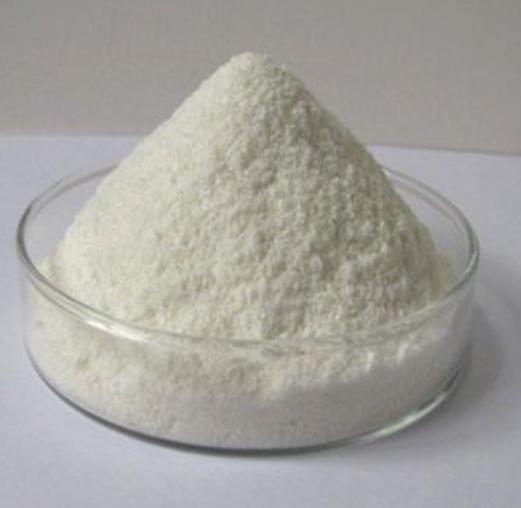Sodium Gluconate: Potential for Clinical Application and its Biological Synthesis
General Description
Sodium gluconate shows promise as a therapeutic intervention for post-COVID-19 olfactory dysfunction by reducing nasal calcium levels that impair olfaction transmission. Clinical trials demonstrated significant improvements in olfactory function with sodium gluconate treatment compared to standard saline solutions. Penicillium oxalicum z19's consolidated bioprocessing approach efficiently synthesizes sodium gluconate from cellulose, offering a sustainable and cost-effective production method. This method simplifies production steps, enhances productivity, and highlights the potential for eco-friendly chemical synthesis. Further research is needed to optimize dosing regimens, assess long-term efficacy, and explore broader applications in treating olfactory impairments.

Figure 1. Sodium gluconate
Potential for Clinical Application
Sodium Gluconate, a Promising Intervention for Post-COVID-19 Olfactory Dysfunction. Sodium gluconate, a water-soluble salt known for its chelating properties, has emerged as a potential therapeutic agent in managing olfactory dysfunction post COVID-19 infection. This condition, often characterized by temporary anosmia or hyposmia, has been linked to elevated nasal calcium levels, which adversely affect olfaction transmission. Given its ability to efficiently bind calcium ions, sodium gluconate presents a novel approach to mitigate these effects and restore olfactory function.
Mechanism of Action in Reducing Nasal Calcium
Sodium gluconate acts as a chelating agent, effectively binding to elevated calcium ions present in nasal secretions. These ions, implicated in the impairment of olfactory receptors, are thereby reduced in concentration upon administration of sodium gluconate. By mitigating the negative impact of calcium on olfaction transmission pathways, sodium gluconate aids in restoring the sense of smell in affected individuals post COVID-19 infection.
Clinical Evidence
In a prospective randomized blinded controlled clinical trial involving fifty patients with persistent olfactory dysfunction post-COVID-19 infection, sodium gluconate demonstrated significant promise. Patients receiving intranasal sodium gluconate exhibited measurable improvements in olfactory function compared to those treated with standard saline solutions. Objective assessments using the Sniffin' Sticks test indicated a clinical improvement from anosmia to hyposmia in the sodium gluconate group. Moreover, quantitative analysis of nasal calcium concentrations revealed a marked decrease following sodium gluconate administration, further supporting its role in ameliorating olfactory dysfunction.
Future Directions
The findings suggest that sodium gluconate holds considerable potential in managing olfactory dysfunction associated with COVID-19 infection. By addressing elevated nasal calcium levels, sodium gluconate offers a targeted therapeutic approach to improve olfaction and enhance the quality of life for affected individuals. Further research is warranted to explore optimal dosing regimens, long-term efficacy, and broader applications of sodium gluconate in treating olfactory impairments across different etiologies. 1
Biological Synthesis
Consolidated Bioprocessing Approach
Penicillium oxalicum, specifically the recombinant strain z19, has demonstrated its potential in the consolidated bioprocessing of sodium gluconate from cellulose. This approach involves the simultaneous expression of glucose oxidase and catalase enzymes from Aspergillus niger by strain z19. These enzymes facilitate the conversion of cellulose (in the form of filter paper powder) into glucose and subsequently into sodium gluconate. The fermentation process was optimized using a fed-batch strategy combined with a two-stage temperature control regimen (0-120 hours at 30°C; 120-192 hours at 45°C), resulting in the production of 13.54 g/L of sodium gluconate. This method not only maintains the cellulolytic capability comparable to the wild-type strain but also enhances sodium gluconate secretion through enzymatic activity, thereby offering a promising alternative for efficient sodium gluconate production from cellulose.
Advantages and Implications
Consolidated bioprocessing represents a sustainable and cost-effective approach for sodium gluconate synthesis. By integrating cellulase production and glucose oxidase/catalase activities into a single microorganism, such as Penicillium oxalicum z19, the process simplifies production steps and reduces overall costs. This method leverages the natural cellulolytic ability of Penicillium oxalicum while enhancing productivity through enzyme secretion, thereby optimizing sodium gluconate yields. Moreover, utilizing cellulose as a feedstock underscores the potential for this biotechnological approach to contribute to the development of eco-friendly and renewable processes for chemical synthesis. Future research may further refine fermentation conditions and explore additional genetic modifications to enhance enzymatic efficiencies, thereby advancing the application of consolidated bioprocessing in industrial sodium gluconate production. 2
Reference
1. Abdelazim MH, Abdelazim AH. Effect of Sodium Gluconate on Decreasing Elevated Nasal Calcium and Improving Olfactory Function Post COVID-19 Infection. Am J Rhinol Allergy. 2022; 36(6): 841-848.
2. Han X, Liu G, Pan Y, Song W, Qu Y. Consolidated bioprocessing for sodium gluconate production from cellulose using Penicillium oxalicum. Bioresour Technol. 2018; 251: 407-410.
);Related articles And Qustion
See also
Lastest Price from Sodium gluconate manufacturers

US $3.50/kg2024-09-19
- CAS:
- 527-07-1
- Min. Order:
- 1kg
- Purity:
- ≥99%
- Supply Ability:
- 3000tons/month

US $10.00/kg2024-09-19
- CAS:
- 527-07-1
- Min. Order:
- 1kg
- Purity:
- 98%
- Supply Ability:
- 10 ton



